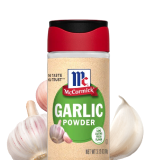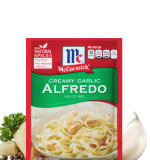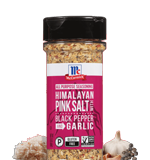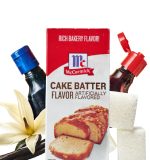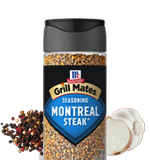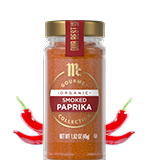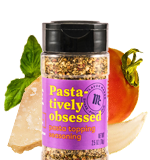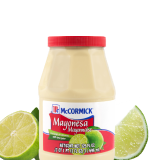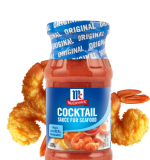
How Long Do Spices Last?

By: McCormick Kitchens
May 28, 2025
Instructions
Do spices go bad? This is a question many cooks are faced with at some point. After all, they’re dry and they sit on the shelf, and you might think that they should last forever. But the facts are not that clearcut.
Spices do not expire in the same way that milk does nor do they become moldy or rotten in the same way fresh produce does. It’s better to think of spices as going “not good” rather than bad.
What does shelf life mean? For spices, it means the length of time they are most aromatic and delicious for cooking.
Generally speaking, dried seasonings, herbs and spices in jars last about 1-2 years. But there are exceptions worth noting. Read on for our comprehensive guide to understanding where your spices stand:
The Shelf Life of Spices
Here’s a rough guideline on the life of those seasonings in your kitchen:
- Indefinite: Vanilla extract, salt, and that's about it. (Other extracts will fade in 2-3 years).
- Whole spices (unground, such as peppercorns, whole allspice, caraway seeds, and more): 3-4 years
- Ground spices (such as cumin, ginger, paprika and chili powder): 2-4 years
- Ground and whole leafy herbs such as basil, oregano, rosemary and most seasoning blends: 1-3 years
All of us have a few jars that have been sitting in the pantry for over a decade. It’s okay to let these spices go.
You deserve to cook delicious food, and that starts with great ingredients! If you found pleasure cooking with your old spices, you’ll find even more when they are replaced with new jars, full of fresher flavor and vibrancy. But what about those old spices? Are they truly a lost cause? Not necessarily.

How to Revive Old Spices
There are 3 ways to bring back a little life to spices that are fading but not ancient, two involving heat:
1. A gentle toast in a skillet can revive a curry powder or five spice blend. Dump the full contents of the jar into a dry pan. Heat to medium-low and stir constantly until it gets noticeably more fragrant. Ground spices will burn easily, so don’t walk away from this one. Allow it to cool before putting it back in the jar.
2. “Fry” the spices in hot oil immediately before cooking with them as an alternative. This method is especially useful for aromatic blends like curry powder or single spices like coriander or cumin. Heat oil in a pan and add spices, stirring as they begin to warm and release their long-hidden aroma. Then, continue with your cooking as planned.
3. Repurpose older spices by making a potpourri and add fragrance to your home without cooking. You can even make these as gifts if your old spices selection is enormous.
Replace Old Spices
Okay, it’s time to replace your spices. Where do you begin? Some of the old spices you have discarded might no longer be needed, or you never really liked them to begin with.
1. Start with the ones you remember enjoying, and build your new stock as you go. It’s probably better to build your spice rack with a dozen spices you really love instead of buying a pre-made assortment with a bunch of “filler” spices you won’t use. Love rosemary to death but pretty neutral on sage? Go with your gut.
2. And remember from above: whole spices last longer. Choose whole nutmeg over ground, peppercorns over ground black pepper, and so on.
3. Many seasonings now come with built-in spice and herb grinders which is fantastic for flavor and shelf-life.
Now that your spice collection is complete, bring order to your spice life and learn how to organize your spices below:
How To Organize Your Spices
There are a few simple ways to make sure your seasonings where you need them, when you need them so they can enhance your cooking each and every day.
1. Start with a wall shelf meant for spices for ease of use, mounted away from direct sunlight and the stove. This leaves everything in plain sight and easy to add to any meal, whether or not you are using a recipe. Spices will last longer in a dark cabinet, but if having them out in the open means they are used more frequently, shelf life might not be an issue.
2. Use a permanent marker to note the date a new jar of seasoning was opened when buying new spices.
3. Avoid putting spices on that little ledge at the top of your stove. Repeated heat is an enemy of spice longevity, whole and ground. And yes you can put salt there, but that’s it.
4. Test out a spice drawer. Some people love having a shallow top drawer where all the spices can lay flat for easy access. There are dividers meant for this setup so that the jars don’t roll around—this is preferable to storing them with the lids up, as it’s really hard to find the spice you want.
5. Stacked shelves or a turntable in the cabinet are also great options. There are short shelves for organizing spices within your cabinet, effectively extending your reach and visual options. After all, the spice in the very back of that cabinet shelf is going to be the jar you reach for the least. Keep your spices easy to access and your whole world gets more flavorful.
Loving Your Spices Every Day
Honestly, the best way to honor the spices in your life (and avoid having to ever throw them out) is to use them. Enjoy some spice love! Don’t be shy when reaching for the curry powder or the allspice.
Many online recipes specify a moderate amount of dried seasonings, but if you like a recipe but feel it could be bolder, increase the seasonings a bit next time and see what happens. You may end up loving the extra boost of flavor. If you're cooking for someone with a sensitive palate, you might not want to be as generous with the more fiery spices like cayenne.
If we give our spices the same attention we give to all the other ingredients our favorite recipes call for, the quality of our cooking will surely be elevated to exciting new heights.
![]()

